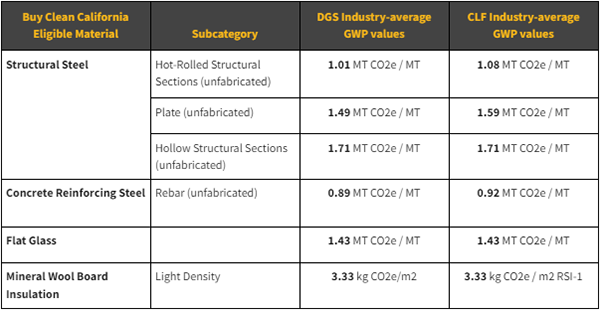|
A Proposed Methodology for Setting Industry-Average GWP Limits for Steel, Mineral Wool, and Flat Glass
by Meghan Lewis, Senior Policy Researcher for the Carbon Leadership Forum
The Buy Clean California Act (BCCA), the first “Buy Clean" policy introduced in the United States, requires the California Department of General Services (DGS), in consultation with the California Air Resources Board, to establish maximum acceptable global warming potential (GWP) limits at industry-average for structural steel (hot-rolled sections, hollow structural sections, and plate), concrete reinforcing steel, flat glass, and mineral wool board insulation. Beginning July 1, 2022, for eligible buildings and infrastructure built by California state agencies, the law will require those agencies to purchase materials that meet these GWP limits, as verified by environmental product declarations (EPDs).
Calculating industry-average values using EPDs, as required by the BCCA, is challenging: the quality and quantity of data available for calculating GWP limits varies by product type and is continually growing. To explore this challenge, the Carbon Leadership Forum assembled a research team in fall 2021 to independently review the available data and propose industry-average GWP values and an associated methodology that would (1) meet the requirements and intent of the BCCA and (2) be based on high quality, published LCA data sources that are available as of December 2021.
As shown in Table 1, the DGS published official GWP values here on January 1, 2022, that are very similar to the values proposed by the CLF research team. We are encouraged that both CLF and DGS arrived at similar conclusions when interpreting how to set limits based on California's Buy Clean Legislation and the current state of available data for materials covered by Buy Clean. We hope that continued development of data and refinement of limits will ultimately enable deeper embodied carbon reductions through the use of procurement policies.

Table 1. Comparison of industry-average global warming potential (GWP) values assigned by the California Department of General Services (DGS), available here, and the Carbon Leadership Forum values, available here. The primary difference between these values has to do with assumptions on scrap percentage for fabricated metals. See the full report for more details.
|
